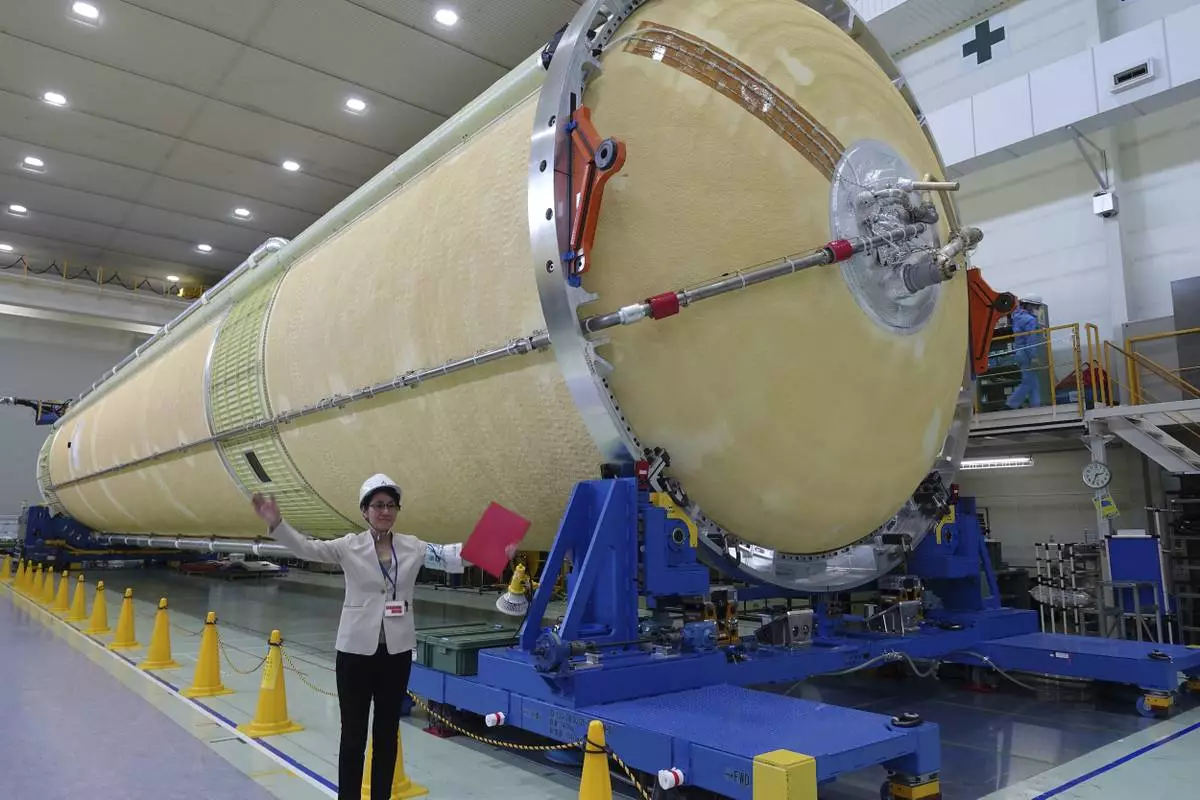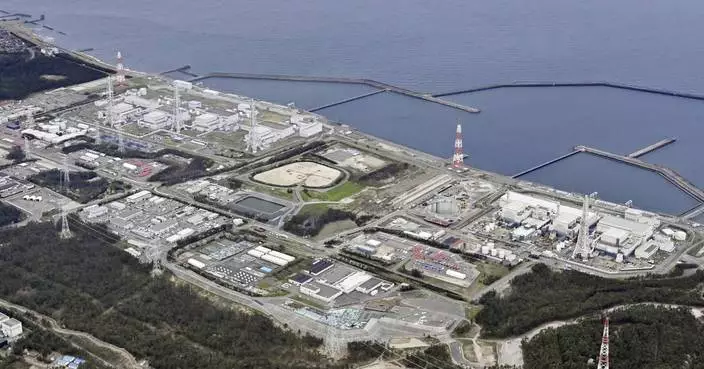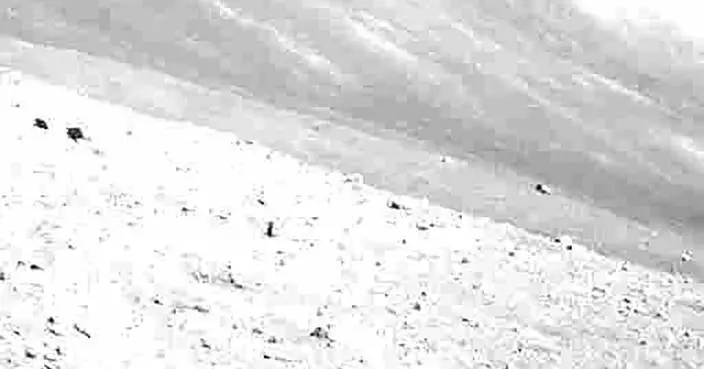The world's oldest person, a 117-year-old Japanese woman, has died.
Nabi Tajima died in a hospital Saturday evening in the town of Kikai in southern Japan, town official Susumu Yoshiyuki said. She had been hospitalized since January.

This Sept. 2015 photo shows Nabi Tajima, the world's oldest person, a 117-year-old Japanese woman. Tajima died of old age, at 117, in a hospital Saturday evening, April 21, 2018, in the town of Kikai in southern Japan, town official Susumu Yoshiyuki confirmed. She had been hospitalized since January. (Kikai Town/Kyodo News via AP)
Tajima, born on Aug. 4, 1900, was the last known person born in the 19th century. She raised seven sons and two daughters and reportedly had more than 160 descendants, including great-great-great grandchildren.
She became the world's oldest person after the death in September of Violet Brown of Jamaica, also at the age of 117. Video on Japanese television showed Tajima moving her hands to the beat of music played on traditional Japanese instruments at a ceremony to mark the achievement.
Tajima's town of Kikai is a small island of about 7,000 people halfway between Okinawa and Kyushu, the southernmost of Japan's four main islands.
The U.S.-based Gerontology Research Group says that another Japanese woman, Chiyo Miyako, is now the world's oldest person. Miyako lives in Kanagawa prefecture, south of Tokyo, and turns 117 on May 2.
Guinness World Records certified 112-year-old Masazo Nonaka of northern Japan as the world's oldest man earlier this month, and was planning to recognize Tajima as the world's oldest person.
TOKYO (AP) — Japan’s space agency announced Friday a plan to launch a major upgrade to its satellite imaging system, as a new flagship rocket is put to the test for a third time.
The Japan Aerospace Exploration Agency that an H3 rocket will be launched from the Tanegashima Space Center, on a southwestern Japanese island, early afternoon on June 30, with a launch window that runs through the end of July.
The rocket will be carrying an Advanced Land Observation Satellite, ALOS-4, tasked primarily with Earth observation and data collection for disaster response and mapmaking, as well as with monitoring military activity, such as missile launches, with an infrared sensor developed by the Defense Ministry. The ALOS-4 is a successor to the current ALOS-2 and can observe a much wider area.
The launch will be the H3's third, coming after a failed debut in March 2023 and a successful launch on Feb. 17. During the first attempt, the rocket's second stage engine did not ignite and the rocket had to be destroyed along with its main payload, a satellite that was supposed to be the ALOS-3.
During H3 No. 2's successful test flight, it carried two commercially-developed observation microsatellites and an ALOS mockup.
JAXA and its main contractor Mitsubishi Heavy Industries have been developing H3 as a successor to its current mainstay, H-2A, which is set to retire after two more flights. MHI will eventually take over H3 production and launches from JAXA and hopes to make it commercially viable.
Japan sees a stable, commercially competitive space transport capability as key to the country's space program and national security.
The 57-meter (187-foot) long H3 rocket is designed to carry larger payloads than the H-2A at about half its launch cost.

FILE - JAXA H3 rocket project managers Masashi Okada, right, and Mayuki Niitsu brief journalists in front of the second stage of a H3 rocket, set for a full-fledged launch later this year after two test flights, inside the Mitsubishi Heavy Industries' Nagoya Aerospace Systems Works Tobishima Plant in Tobishima, Aichi prefecture Thursday, March 21, 2024. Japan’s space agency announced Friday, April 26, that it will launch its new flagship rocket H3 on June 30 carrying an observation satellite for disaster response and security purposes, a key mission that it had failed in its debut flight last year. (AP Photo/Mari Yamaguchi, File)

FILE - A Mitsubishi Heavy Industries staff member stands next to the top of the first stage of a H3 rocket, inside the Mitsubishi Heavy Industries' Nagoya Aerospace Systems Works Tobishima Plant in Tobishima, Aichi prefecture Thursday, March 21, 2024. Japan’s space agency announced Friday, April 26, that it will launch its new flagship rocket H3 on June 30 carrying an observation satellite for disaster response and security purposes, a key mission that it had failed in its debut flight last year.(AP Photo/Mari Yamaguchi)












